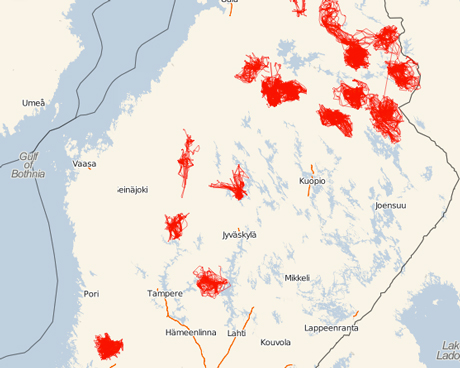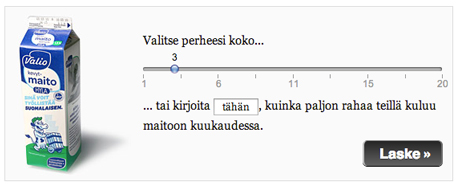
Data journalism is considered "the new scoop" at Finnish news site Helsingin Sanomat.
Unlike text-based stories which are picked up by competitors and published quickly, visualisations are "content that cannot be copied", according to data journalist Esa Makinen.
Speaking at Digital Journalism Days, a conference in Warsaw organised by Polish title Gazeta Wyborcza, Makinen explained the many advantages of data journalism and talked through the approach.
Journalism.co.uk caught up with Makinen after the conference to find out more about the data desk at Helsingin Sanomat, a daily newspaper and website, which has 1.5 million readers and introduced a porous paywall in November. Readers can access five articles a week before being required to pay €10 a month for a subscription.
Breaking news
Helsingin Sanomat creates data visualisations for breaking news.
"The idea is that we make news apps very fast," Makinen said. "If there is a news event, we try to do something in two or three hours."
The news outlet creates data visualisations quickly by using a library of templates for graphs, maps and other interactives.
The templates are stored in an internal wiki so that journalists can add their own data and create a simple visualisation, or they can seek help from the three-person data desk.
The empty templates have "all the elements necessary for a news app – except the news app itself", Makinen said.
Tools
- Datawrapper: For creating charts and graphs
- Timeline JS: For creating interactive timelines
Here is an example of a timeline of Nokia, a Finnish company. Again, the data desk has set up timeline templates for fast turnarounds.
- Maps
This map shows 55,000 wolf locations. After attending one of Makinen's courses, journalist Heli Saavalainen explained she had 55,000 rows of data on wolf locations and wolf journeys.
Makinen plotted the data on a map and the result proved extremely popular. "Tens of thousands of people wanted to see where they were moving in their area," he said.

Mapping with wolves
- Interactive counters
"We can now put people in the centre of the story," Makinen explained.

- Google Forms
The news outlet also used Google Forms to find out how much people were paying to arrange mortgages, information that Finnish banks "were reluctant to provide" to the news organisation, Makinen said.
Around 5,000 people responded by filling in a form, providing the bank name, mortgage rate, additional fees, and postcode. The data desk was able to create a map and spot patterns and stories.
Bigger projects
In addition to the daily visualisations and interactives reacting to breaking news events, the data desk has carried out some much larger projects, such as one focused on voting.
- Voting advice
The Helsingin Sanomat application asked people answer 30 questions which were matched against policy promises from the political parties. Or as Makinen described it, "it's like Match.com for politicians and voters".
The slides from Makinen's presentation are at this link.
Free daily newsletter
If you like our news and feature articles, you can sign up to receive our free daily (Mon-Fri) email newsletter (mobile friendly).









